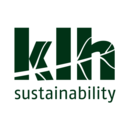Sustainability of Heathrow 2.0
The launch of Heathrow’s revamped sustainability strategy ‘Heathrow 2.0’ set some big, bold ambitions in its effort to become the most sustainable airport in the world. Following a suite of airport best practice, the whole airport will operate on 100% renewable energy by April 2017. In addition, airside vehicles will be electric and hydrogen powered, to operate within the airport’s designated ‘ultra-low emission zone’. Heathrow endeavour to become zero carbon by 2050, and are targeting a carbon neutral third runway. Innovative carbon off-setting measures such as peat land restoration are actively being considered.
Perhaps the ‘Centre of Excellence’ that facilitates research on sustainable innovation, rumoured to cost a six-figure sum, will help to distract from the elephant in the room? That is, the carbon impact of the estimated 260,000 extra flights landing annually at Heathrow, facilitated by the new runway.
Heathrow 2.0 presents a strong case for the minimisation of emissions from sources owned or controlled by Heathrow, known as ‘direct emissions’. A weaker case is made for the indirect emissions; those that are a consequence of Heathrow’s activities, but that occur at sources owned or controlled by another organisation, namely the airlines. The reliance on airlines themselves to address the emissions from aircrafts separate from the airport quickly weakens Heathrow’s carbon neutral sustainability case. But is it right to be directing our frustration of increased aircraft emissions towards Heathrow? Should the responsibility rest solely on the airlines’ mitigation methods or should Heathrow be taking a greater share of the responsibility as they are facilitating the additional aircraft?
When it comes to establishing the boundaries of responsibility for the production of indirect carbon emissions, it can cause controversy, even at an international scale. In many western countries, an ever increasing demand for goods and services is often met by imports from other areas of the world. Yet current emission accounting is focused on emissions related to production only. On this basis, countries are able to import carbon intensive products without assuming any responsibility for the associated, indirect carbon emissions. Should the responsibility not extend to the countries facilitating the production of the goods and services in the first place?
Life cycle analysis techniques have the power to significantly influence the awareness and allocation of responsibility of indirect carbon emissions. Accounting for the embodied carbon recognises both the direct and indirect emissions by considering goods and services within a ‘cradle to grave’ context. Obtusely, indirect operational and maintenance carbon is not often considered within the life cycle analysis. Yet, this is needed to understand a development’s carbon impact in its entirety.
Heathrow are taking responsibility for the indirect carbon emissions during construction, namely the embodied carbon of the new runway, but should they be doing more to address the indirect operational emissions arising from the aircraft? Taking ownership of indirect carbon emissions, whether at a project or a country scale, places additional pressure on organisations and governments to innovate. As we approach the tipping point of the 2 degrees rise in global temperature, it is essential that those actors with the power and resources to influence change take greater responsibility and are held accountable.
[edit] Find out more
[edit] Related articles on Designing Buildings Wiki
- Airports National Policy statement and Heathrow.
- CIBSE Case Study: Christchurch International Airport.
- KLH Sustainability.
- Gatwick second runway.
- Heathrow Airport expansion.
- Heathrow Terminal 5.
- Lifecycle assessment.
- London City Airport expansion.
- Madrid Barajas Airport.
- Procurement of Heathrow T5.
- Sustainability.
- Taiwan Taoyuan International Airport Terminal 3.
- Thames estuary hub airport.
- The Great Barn of 1425-27 at Harmondsworth, Middlesex.
- Whole life costs.
Featured articles and news
One of the most impressive Victorian architects. Book review.
RTPI leader to become new CIOB Chief Executive Officer
Dr Victoria Hills MRTPI, FICE to take over after Caroline Gumble’s departure.
Social and affordable housing, a long term plan for delivery
The “Delivering a Decade of Renewal for Social and Affordable Housing” strategy sets out future path.
A change to adoptive architecture
Effects of global weather warming on architectural detailing, material choice and human interaction.
The proposed publicly owned and backed subsidiary of Homes England, to facilitate new homes.
How big is the problem and what can we do to mitigate the effects?
Overheating guidance and tools for building designers
A number of cool guides to help with the heat.
The UK's Modern Industrial Strategy: A 10 year plan
Previous consultation criticism, current key elements and general support with some persisting reservations.
Building Safety Regulator reforms
New roles, new staff and a new fast track service pave the way for a single construction regulator.
Architectural Technologist CPDs and Communications
CIAT CPD… and how you can do it!
Cooling centres and cool spaces
Managing extreme heat in cities by directing the public to places for heat stress relief and water sources.
Winter gardens: A brief history and warm variations
Extending the season with glass in different forms and terms.
Restoring Great Yarmouth's Winter Gardens
Transforming one of the least sustainable constructions imaginable.
Construction Skills Mission Board launch sector drive
Newly formed government and industry collaboration set strategy for recruiting an additional 100,000 construction workers a year.
New Architects Code comes into effect in September 2025
ARB Architects Code of Conduct and Practice available with ongoing consultation regarding guidance.
Welsh Skills Body (Medr) launches ambitious plan
The new skills body brings together funding and regulation of tertiary education and research for the devolved nation.
Paul Gandy FCIOB announced as next CIOB President
Former Tilbury Douglas CEO takes helm.























